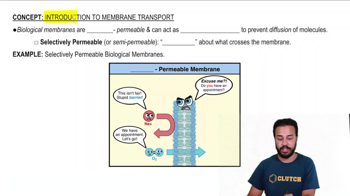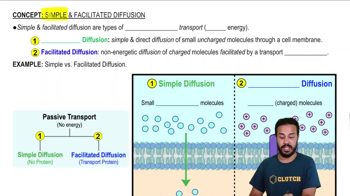Multiple Choice
Which of the following statements about cotransport of solutes across a membrane is correct?
2155
views
 Verified step by step guidance
Verified step by step guidance



 2:37m
2:37mMaster Active Transport with a bite sized video explanation from Bruce Bryan
Start learning